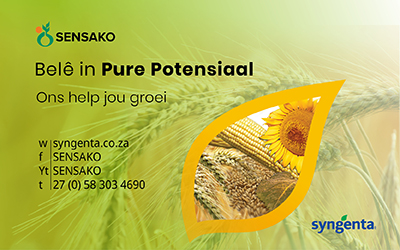
Crop protection products with UN numbers are classified as dangerous goods, and transporting such products on South African roads involves the risk of traffic accidents, which may result in spillage of the pesticides, fire, or environmental pollution. Therefore, it is important for anyone transporting crop protection products to understand the regulations encompassed in the National Road Traffic Act (NRTA), 1996 (Act No. 93 of 1996). Failure to adhere to the regulations because of a lack of knowledge will not be an acceptable excuse in court and contravention of the law can lead to an insurance claim being rejected.
Regulation 276 of the Regulations and Notices No. R225 of the NRTA and Section 7.4.1 of the South African National Standard 10231 (Transport of dangerous goods by road – operational requirements), offer exemptions for the transport of dangerous goods under certain conditions. A bona fide producer or his/her direct employee transporting crop protection products with UN numbers intended for use in farming operations and his/her load on a private vehicle, are exempted from the statutes of the NRTA and SANS 10231, provided that the exemption requirements below are adhered to:
- The crop protection products are not transported for resale either in their original form or in combination with any other substance.
- The journey does not exceed 250 km of which no more than 50 km shall be on a main arterial road designated with an ‘N’ number (N1, N2, N3).
- The quantity of crop protection products in liquid and solid form transported as separate loads must not exceed 1 000 litres or 1 000 kilograms, respectively.
- If a combination of liquid and solid crop protection products is being transported as one load on a vehicle, then the quantity loaded cannot exceed 1 000 units, where one unit is equivalent to one litre or one kilogram.
To put the quantity into context for ease of understanding, a producer or his/her direct employee transporting only liquid pesticides not exceeding 1 000 litres is exempt. This is the same for a producer or his/her direct employee transporting only solid pesticides not exceeding 1 000 kilograms. Now, a producer or his/her direct employee transporting 500 kilograms of solid pesticides and 450 litres of liquid pesticides, is also exempt because that equates to 950 units when the amounts are added together and does not exceed 1 000 units.
Where producers do not meet the criteria for exemption, then all legal liability pertaining to the road transport of dangerous goods according to the NRTA applies. However, at commercial farming level, which usually involves regulated pesticide consignments, such consignments are generally delivered to farms by a compliant transport service provider. Producers receiving regulated consignments must ensure that the site where offloading is to take place is spacious and suitable with the necessary equipment, such as forklift trucks, in working condition.
Safety is the number one priority, and producers must always ensure that the vehicle dispatched by the transport service provider is fit for purpose. The vehicle must be licensed to transport dangerous goods, suitably placarded in terms of the load with no obvious spillage or damage to products. The driver is also required to be suitably licensed in relation to the type of transport vehicle, with the necessary personal protective equipment (PPE) relative to the transport emergency cards (TREC). Where a vehicle is deemed unfit to offload due to the risk involved, then the consignment must be refused. Producers have a constitutional obligation to ensure that the offloading operation does not proceed if for any reason it is considered unsafe.
Best practices
It is not advisable for producers or employees to load animal feeds in the same area of the vehicle where pesticides are loaded. It is a well-established fact that crop protection products give off fumes, and animal feeds may absorb these fumes. Producers need to ask themselves what happens when livestock are fed animal feeds which have absorbed toxic pesticide fumes. The advice is clear, no animal feeds are to be loaded in the same area of a vehicle where crop protection products are loaded.
In terms of inorganic solid fertilisers, this is no different to animal feeds. Therefore, it is not advisable to load inorganic solid fertilisers in the same area where crop protection products are loaded because these fertilisers may become contaminated with fumes. This could lead to application issues due to the integrity of the fertiliser potentially being compromised. Conversely, for liquid fertilisers packaged in plastic containers, such products will not absorb fumes given off by pesticides. Therefore, the integrity of liquid fertilisers will not be compromised when loaded in the same area as crop protection products on a vehicle.
Finally, it is not advisable for a producer or employees to load food and fuels near crop protection products on a vehicle. Food items may absorb fumes from crop protection products which could make anyone who consumes such food items ill, potentially resulting in unwarranted treatment bills. When it comes to fuels, this presents an unwarranted fire risk. Further to that, no dogs should be allowed at the back of vehicles where crop protection products have been loaded. The Griffon Poison Information Centre (PIC) receives many reports of dogs being poisoned due to accidental spillage of products containing highly toxic active ingredients. Producers who love their dogs, will keep them safe and leave them at home and away from any area where crop protection products are being stored, loaded, handled, and utilised.
Concluding remarks
Remember that it is always best to operate within the boundaries of the law as opposed to outside. The consequences are simply not worth the risk.






























